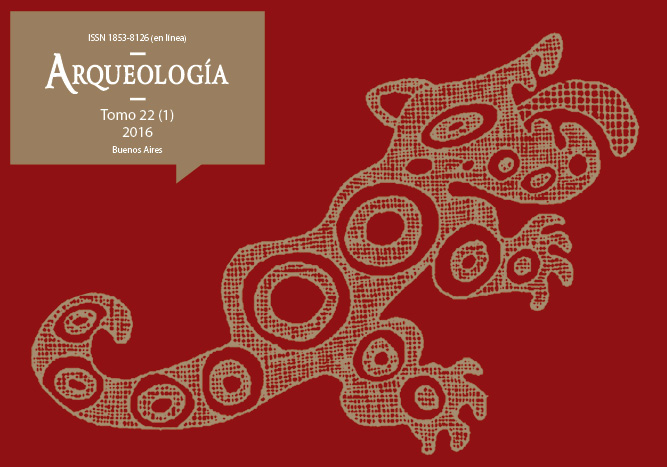Technical choices for ceramic manufacture by first millenium societies (Tinogasta Department, Catamarca)
Keywords:
Ceramic manufacture, Technical choices, Petrographic analysis, Morpho-stylistic analysis, First millennium, West Tinogasta
Abstract
The aim of this work is to characterize the technical variability of western Tinogasta (Catamarca) ceramics produced and consumed during the first millennium AD in order to identifythe changes and continuities in the execution of the pottery operational sequence during that time span. To that end we conducted petrographic and morpho-stylistic studies on a sample of artifacts from Palo Blanco village and other sites located in the wide study region. The results contribute to the definition of the operational sequence of production and point to the local manufacture of ceramics and the use of different recipes for making pots for different uses.Downloads
Download data is not yet available.
How to Cite
Feely, A., Quenardelle, S., & Ratto, N. (1). Technical choices for ceramic manufacture by first millenium societies (Tinogasta Department, Catamarca). Arqueología, 22(1), 149-167. https://doi.org/10.34096/arqueologia.t22.n1.2469
Section
Articles
Authors who publish in this journal agree to the following conditions:
- Authors retain copyright and yield to the journal right of first publication with the work registered with attribution license Creative Commons, which allows third parties to use the published always mentioning the authorship of the work and first publication in this magazine.
- Authors can make other independent and additional contractual arrangements for the non-exclusive distribution of the version of the article published in this issue (p. Eg., Inclusion in an institutional repository or publish it in a book), provided that clearly indicate that the work was published for the first time in this magazine.
- It allows and encourages the author / s to publish their work online (eg institutional or personal pages) before and during the process of revision and publication, as it can lead to productive exchanges and greater and more rapid dissemination of work published (See The Effect of Open Access).





(1)13.png)






1.jpg)
1.jpg)


13.png)
1.png)


(1)1.png)









